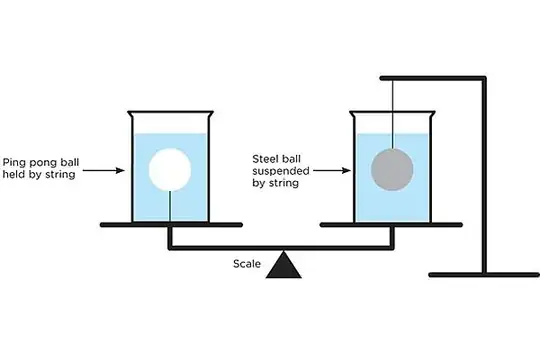I was pondering Which way does the scale tip? I understand it tips to the right. Here's the setup:

The issue is my intuition fails in understanding what happens on the right side. If I place a beaker with water on a scale, it will measure some weight. And if I then suspend a steel ball in that water, the scale will measure a greater weight, even though the ball is suspended by something else. Seems like magic.
Intuitively, I can look at this problem from two perspectives:
- As the stand
- As the scale
As the stand, it makes sense. I've carried weights into swimming pools and felt them become apparently lighter. I'm told this is due to "buoyancy", but I'm not sure I intuitively understand it. It feels easier to accept though, since I have experienced it directly.
But starting from the perspective of the beaker, how does this make any kind of intuitive sense? From this perspective, I think the volume of water in the beaker, which I am supporting, has not changed. I just can't conceive of how suspending a weight in the water could possibly change anything.
If I look at the whole system, it's apparent that if the steel ball is apparently lighter, then whatever the scale is supporting must be apparently heavier by an equal amount. But this doesn't satisfy me as an intuitive explanation: I know this must be true mathematically, but without being able to understand from the perspective of the scale I don't know why it's true. What's it like to be the scale in this setup, intuitively?